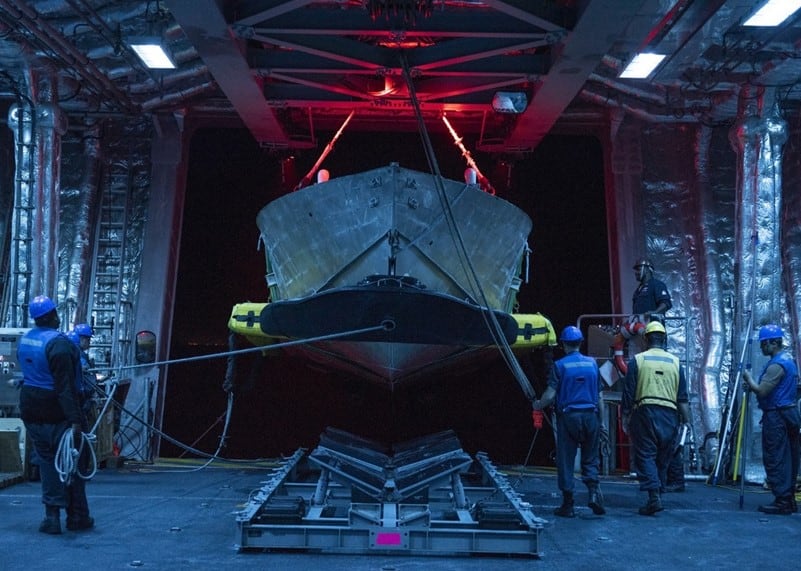WASHINGTON — The U.S. Navy declared initial operational capability on its entire mine countermeasures mission package, which will operate off littoral combat ships and other potential motherships.
The mission package includes four primary systems to find, identify and destroy sea mines: the Airborne Laser Mine Detection System and the Airborne Mine Neutralization System, both of which are operated from MH-60 helicopters; and the Unmanned Influence Sweep System and the AN/AQS-20C mine-hunting sonar, both of which are towed behind the Mine Countermeasures Unmanned Surface Vessel.
Each of these systems underwent individual testing and IOC declarations, and the Navy on May 2 conferred that readiness grade on the entire family of systems.
The Navy has also been developing the Knifefish unmanned underwater vehicle as part of the mission package. Rear Adm. Casey Moton, the program executive officer for unmanned and small combatants, told reporters Thursday that a “Block 0″ version of the UUV was used in the mission package operational tests to ensure it could be launched, recovered and operated alongside the other unmanned systems; but the Navy will pause acquisition of this UUV as the service pursues improvements, a change revealed in the fiscal 2024 budget request.

The sea service completed its operational test and evaluation in August 2022 aboard Independence-variant littoral combat ship Cincinnati. Moton said this testing included 230 hours of mine-hunting operations with the MCM USV across 33 separate missions; 12 airborne sorties; the first-ever dual-USV operations, with one MCM USV towing the minesweep and the other towing the sonar; and a command-and-control demonstration using two MCM USVs and one Knifefish.
In the nine months since, Moton said the Navy has been poring over the data, identifying any remaining performance or reliability problems in the equipment, and either fixing them or mapping out detailed plans to fix them before a first operational deployment.
Moton said the Navy planned to deploy the first LCS with the mine countermeasure package in fiscal 2025. Once the fleet has sufficient capacity, Navy and Defense Department leaders will certify that the LCS mission package is capable enough to handle all of the service’s mine countermeasures needs, and the Navy will begin to retire the aging Avenger-class MCM ships and MH-53 helicopters that today provide MCM capability to fleet commanders overseas.
Megan Eckstein is the naval warfare reporter at Defense News. She has covered military news since 2009, with a focus on U.S. Navy and Marine Corps operations, acquisition programs and budgets. She has reported from four geographic fleets and is happiest when she’s filing stories from a ship. Megan is a University of Maryland alumna.





